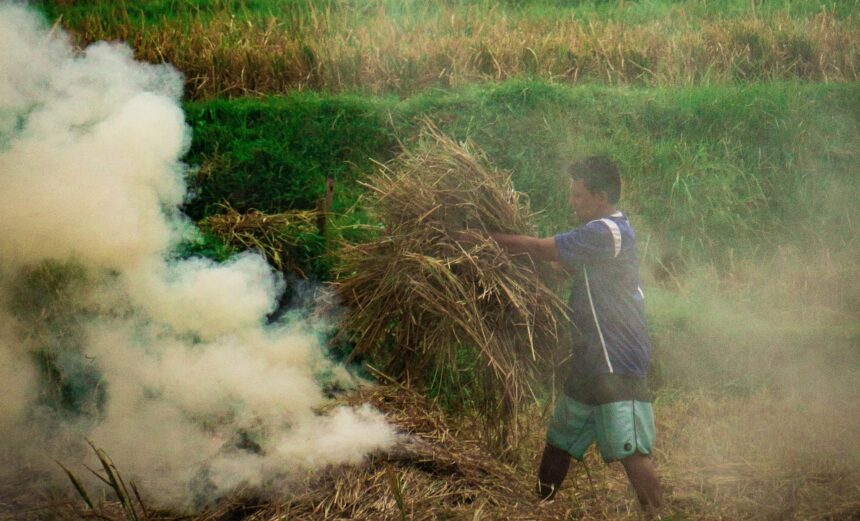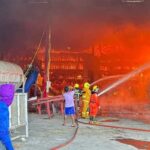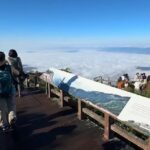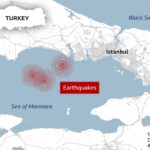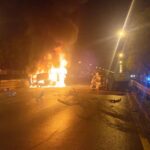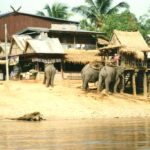Forest and agricultural burning in Chiang Rai Province and other northern provinces often occur during the dry season, from January to April, which results in severe haze problems.
The haze problem in Chiang Rai Province is usually very severe from February to April due to the accumulation of fine dust particles (PM2.5) in the air, significantly related to the high and continuous hotspots yearly.
Large masses of smoke rising high from neighboring countries continuously accumulate due to closed weather conditions, high levels of dust pollution, and the haze problem’s lack of borders, making it difficult to control jointly.
Transboundary haze has a tangible impact on people’s health and daily lives, as well as on tourism and the environment in the Mekong Basin region. Since the impact occurs across borders, ASEAN countries have set goals to reduce haze and become smoke-free together.
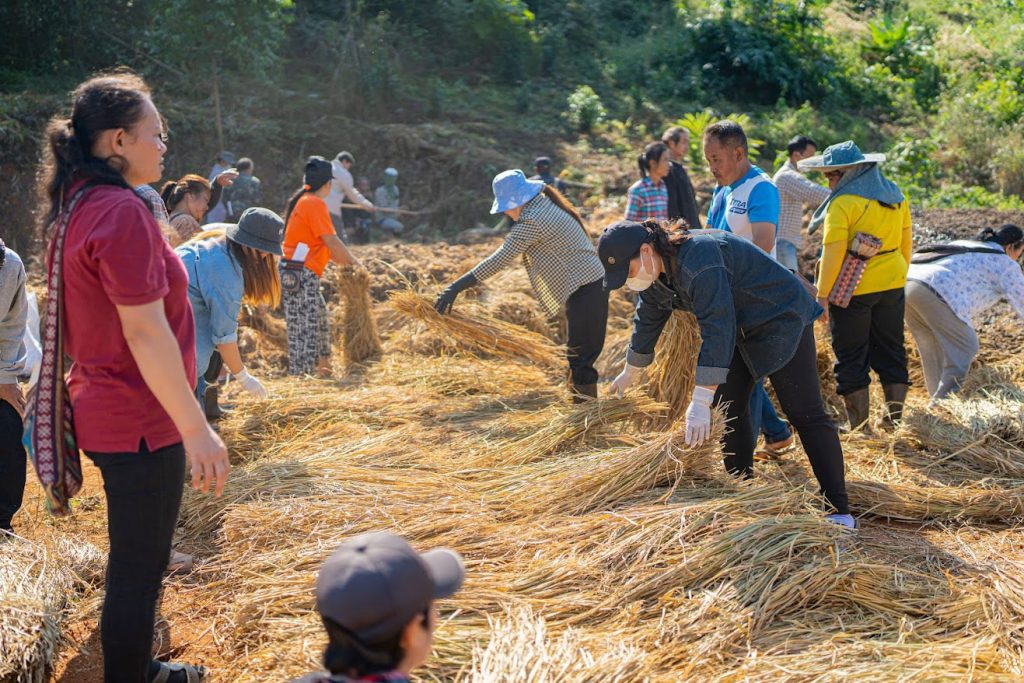
Chiang Rai, a pilot area, Participated in the transboundary haze reduction operation.
Early in 2024, Chiang Rai Province and various sectors under the operation of the Thai-Laos-Myanmar cooperation development project, driving the management and reduction of transboundary haze pollution with support from the Agricultural Research Development Agency (Public Organization)
Continuing the policy of Chiang Rai Province, connecting the mechanism of the Thai-Laos border peacekeeping committee between Chiang Rai Province and Bo Kaeo Province to prevent and solve the problem of forest fires and haze that affect the environment and society, promoting parallel cities to carry out activities and good cooperation between each other
One of the 2 pilot areas in the Pha Tang border area is located on the mountain range of Doi Pha Mon along the Thai-Laos border. During the dry season, continuous forest burning along the border spreads across a wide area, resulting in haze that is difficult to control and intercept.
It greatly impacts forest areas and often occurs in the same area.
Another area is Ban Pong Klang Nam, Village No. 12, a large Wawi Subdistrict, Mae Suai District village. It is a mountainous area with a plain at the foot of a valley. It is in the Mae Lao National Forest Reserve on the left bank.
In the past, it was found that the area had the most heat points from burning in the sub-district.
Community leaders and villagers have worked together to monitor and prevent burning and fires from spreading to agricultural plots. This protects important economic crops, namely tea, coffee and rubber, and emphasizes organic farming.
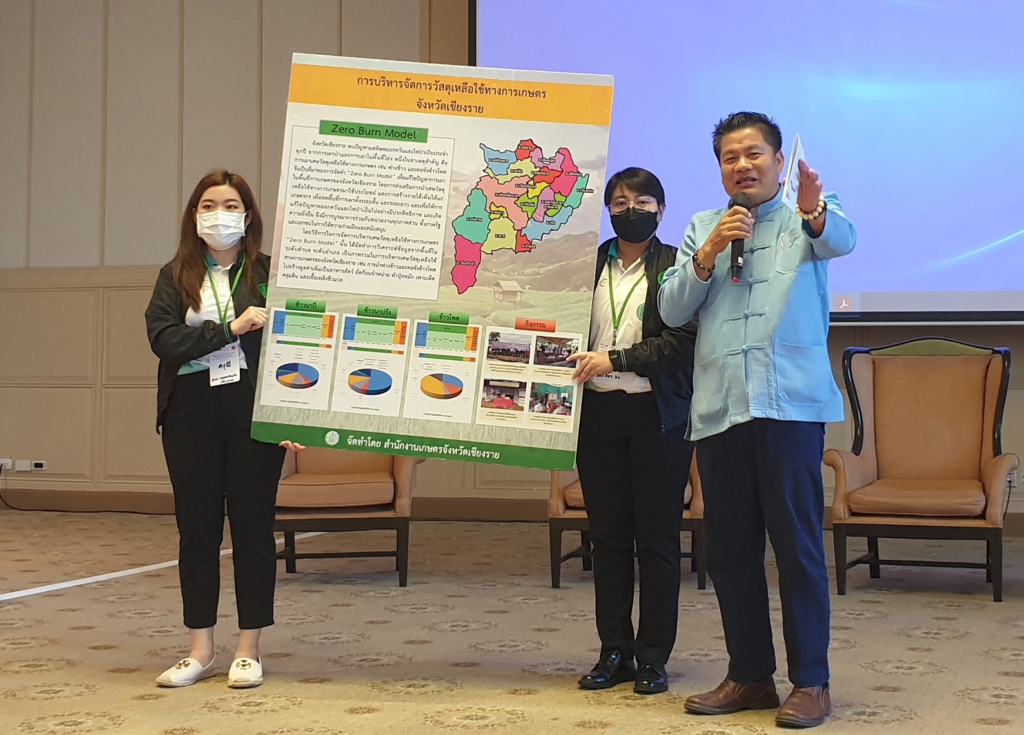
Good practices to reduce burning and reduce haze: Thai-Lao cooperation, one breath
At least 2 forms of guidelines for managing and reducing burning and haze have been initiated, along with raising awareness of sustainable agricultural management, in line with the problems of the area, as a joint demand of the leaders of the sector, easy to implement, and resulting in cooperation to reduce burning and reduce cross-border haze, including:
Cooperation to reduce burning and reduce haze across the border of 2 countries, Buffer Zone, Pha Tang border area, develop networks in 3 local areas of Wiang Kaen District, jointly intercept, campaign to reduce and control burning along the border, prevent the spread of fires to agricultural plots, along with promoting agricultural practices to reduce burning along the area, creating good relations along the border of 2 countries, 3 cities, together with the Lao PDR for continuous cooperation.
Village Fertilizer Bank, The Ban Pong Klang Nam Farmers Group, Wawi Subdistrict, Mae Suai District, promotes and campaigns for farmers to collect agricultural waste from the plots after harvesting risky crops.
They collect and produce them as soil conditioners and organic fertilizers, sharing them with members to use and circulate in the agricultural plots. This reduces production costs and the problem of burning crop waste. They also encourage the practice of it in every production season, starting with village leaders and interested persons and gradually expanding the results to the village groups.
The above cooperation to reduce burning and reduce transboundary haze was initiated with cooperation and hoped for tangible results to help solve the burning problem and reduce burning during the upcoming dry season, emphasizing tangible results so that this initiative can become a good practice every year reducing burning during January to April as a practice, resulting in a process of cooperation and expanding the scope of practice widely.
In addition, external agencies have empowered it to benefit the area, helping to reduce burning and transboundary haze. This will reduce the impact on public health, tourism and the environment of the country’s policy to achieve sustainable results.
Source: Thailand Environment Institute
Trending News:
Chiang Rai Logan Factory Gutted By Massive Fire

Geoff Thomas is an award winning journalist known for his sharp insights and no-nonsense reporting style. Over the years he has worked for Reuters and the Canadian Press covering everything from political scandals to human interest stories. He brings a clear and direct approach to his work.




